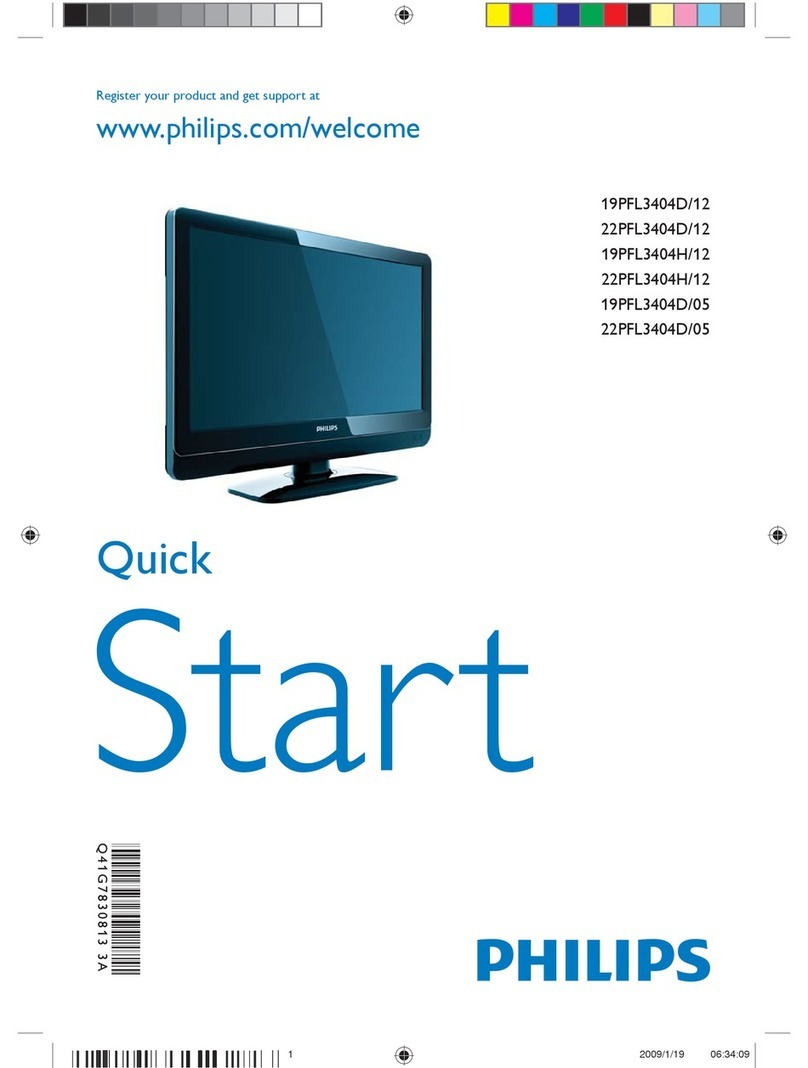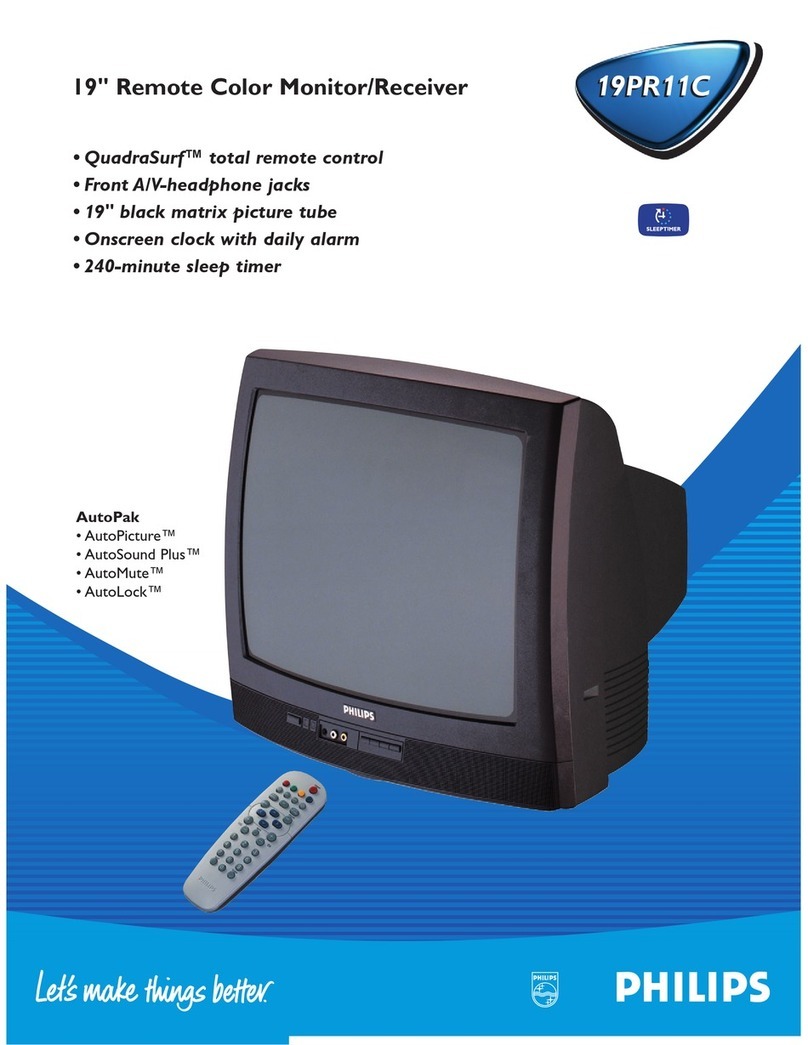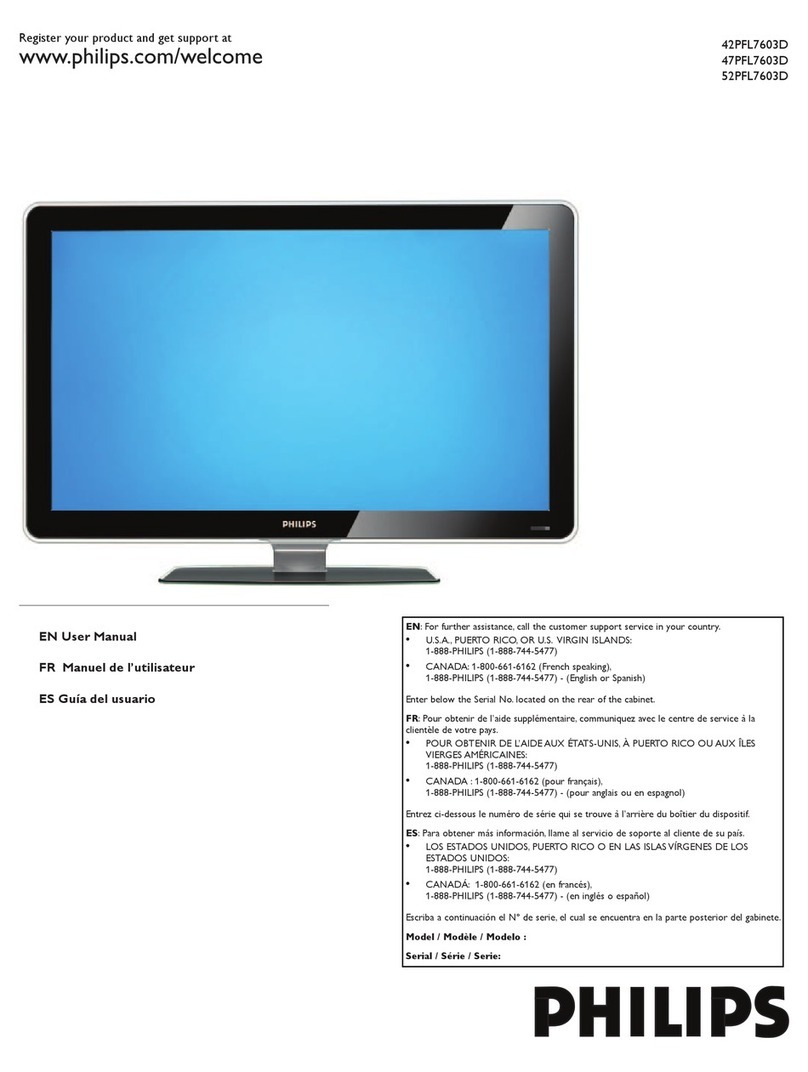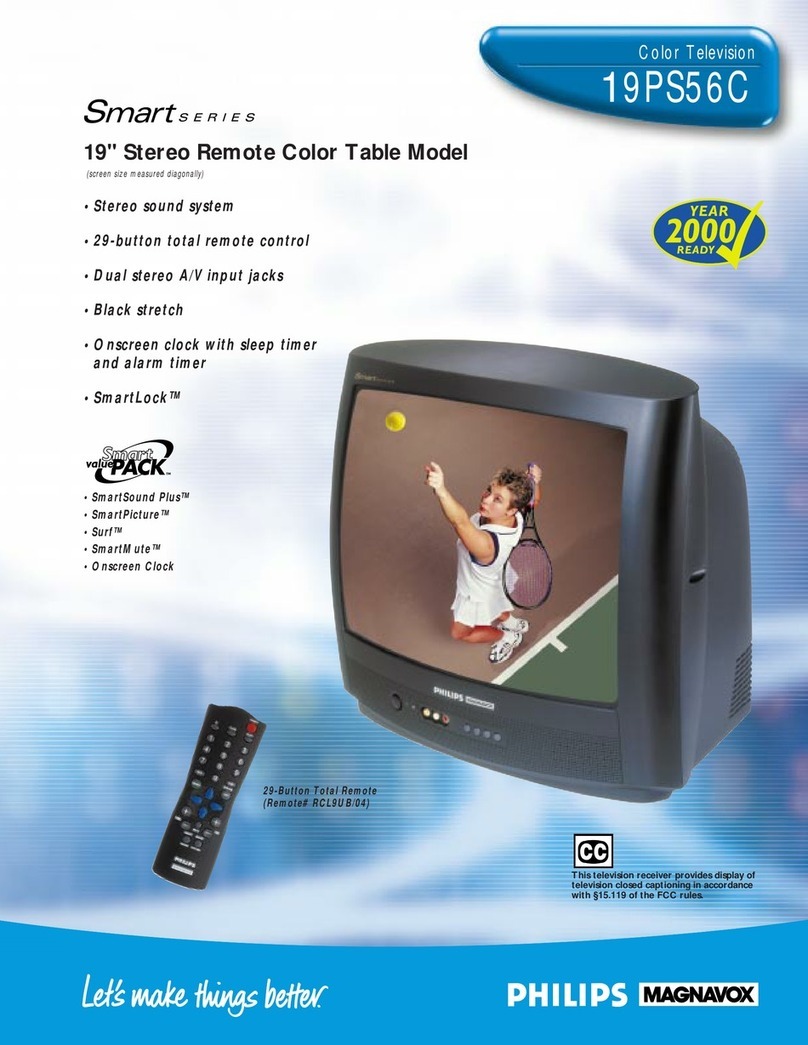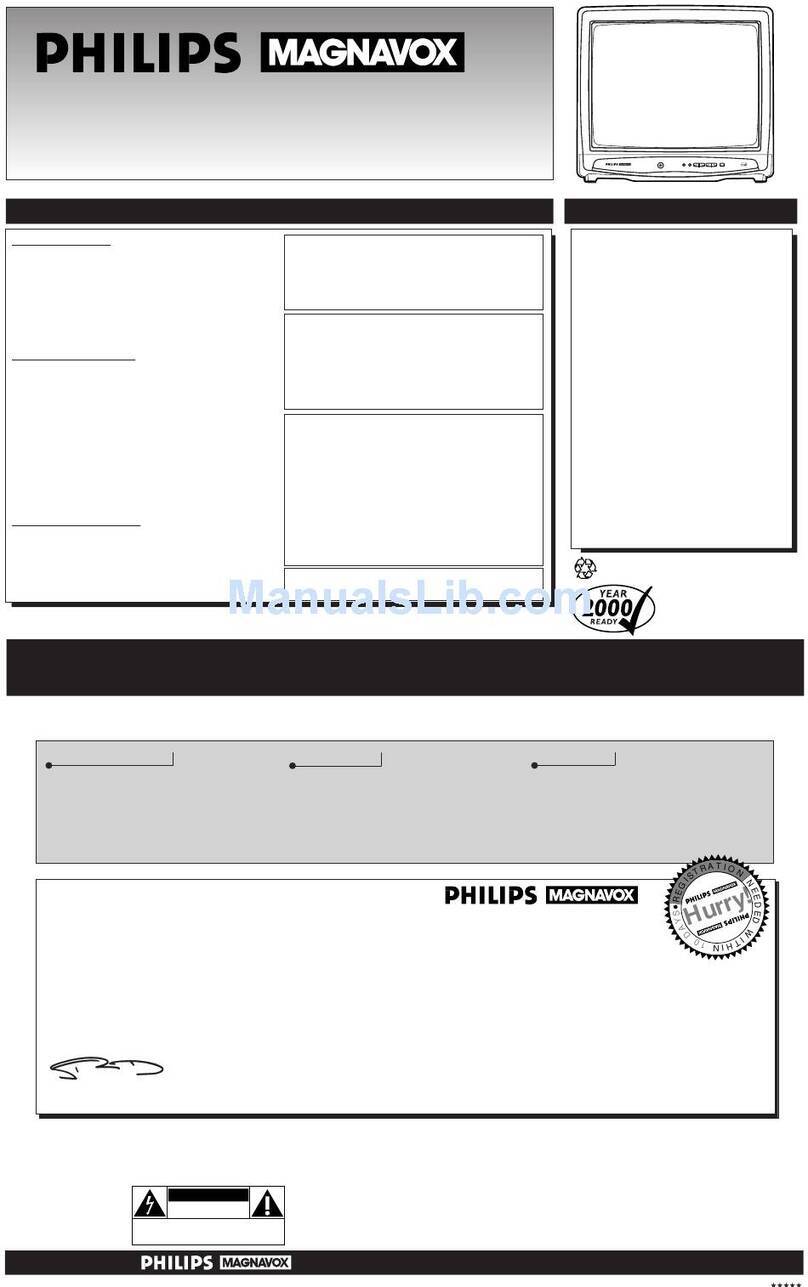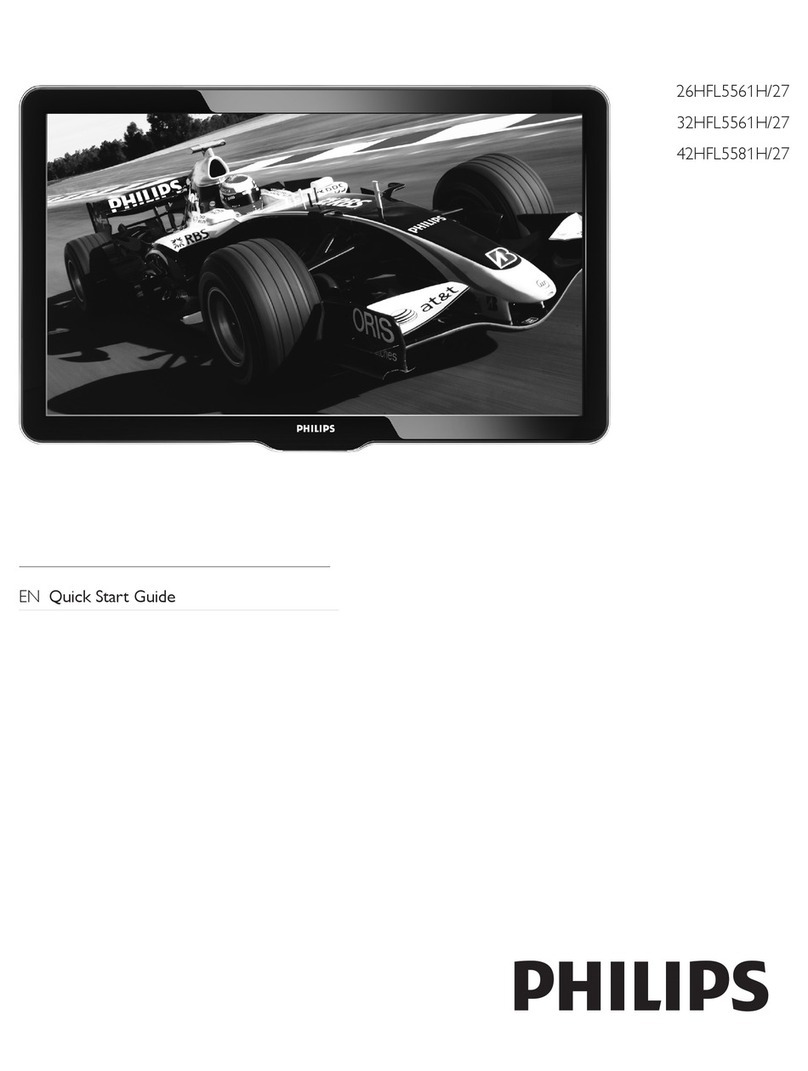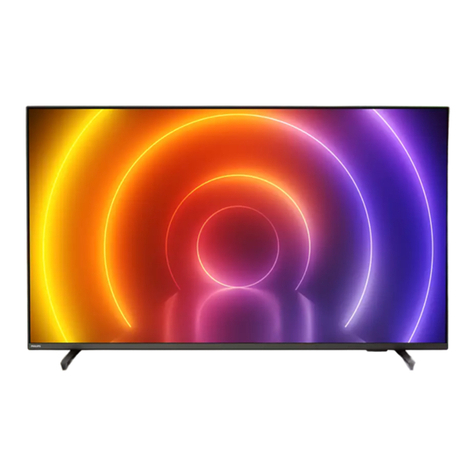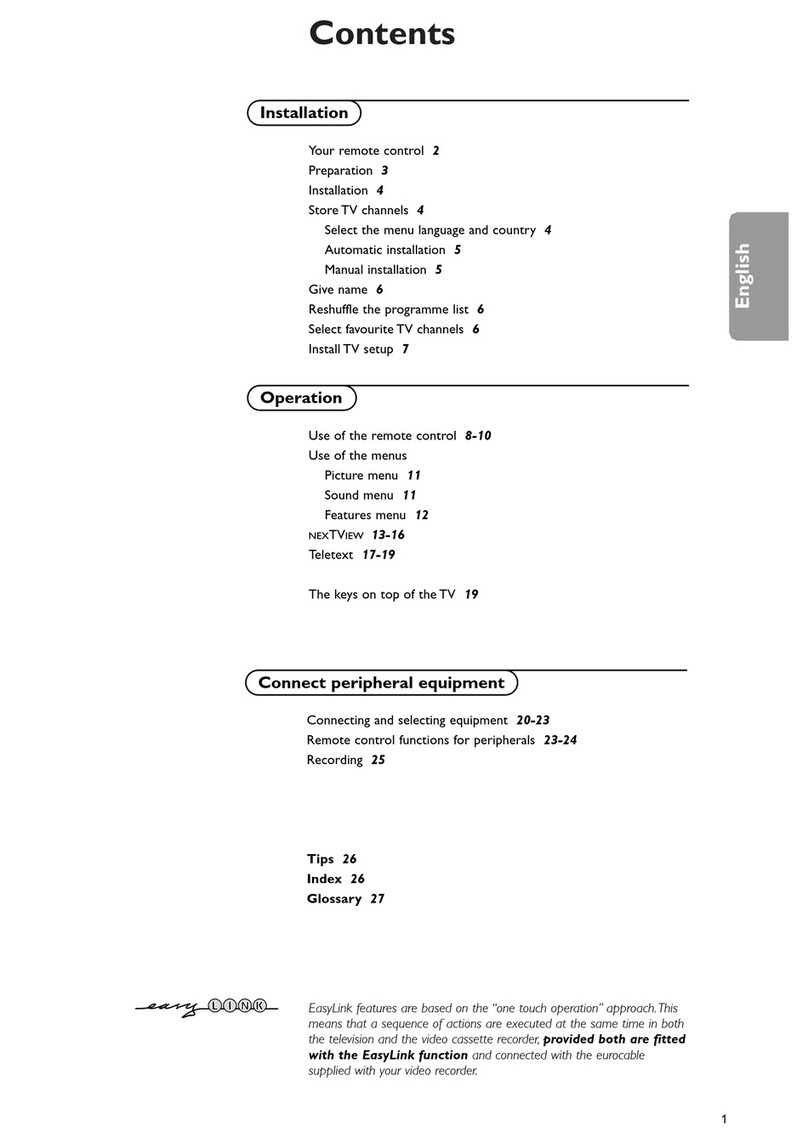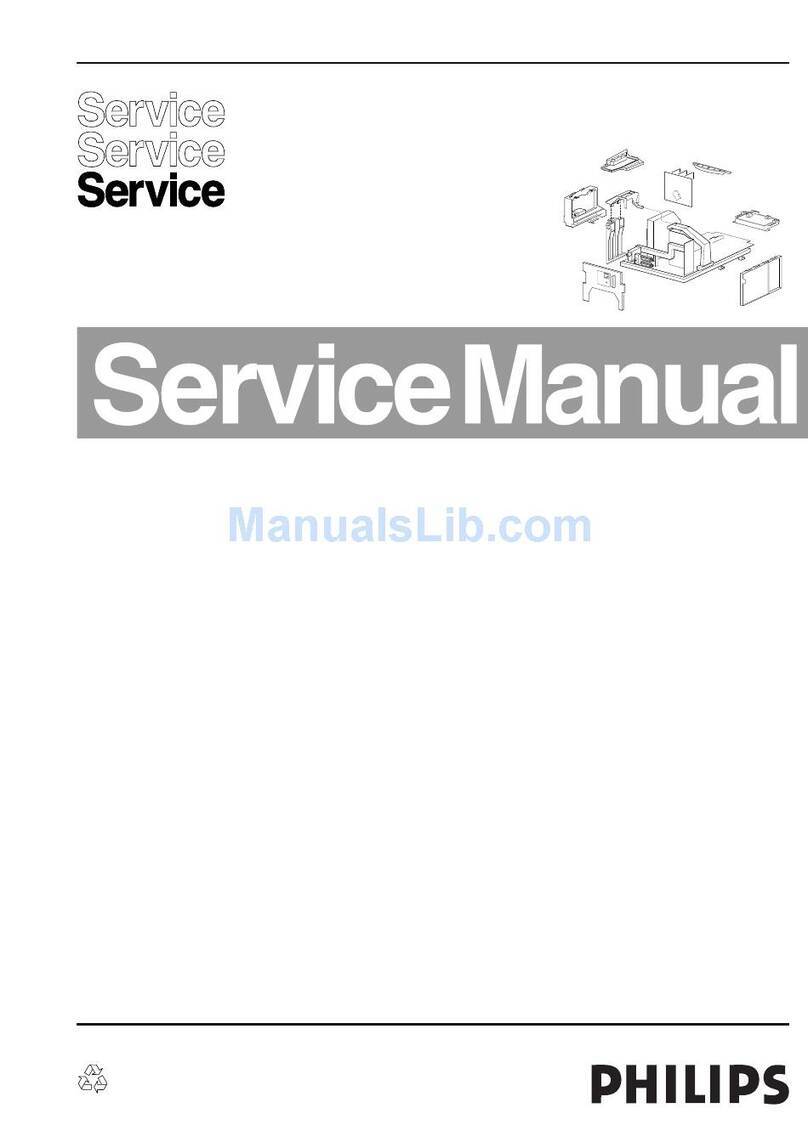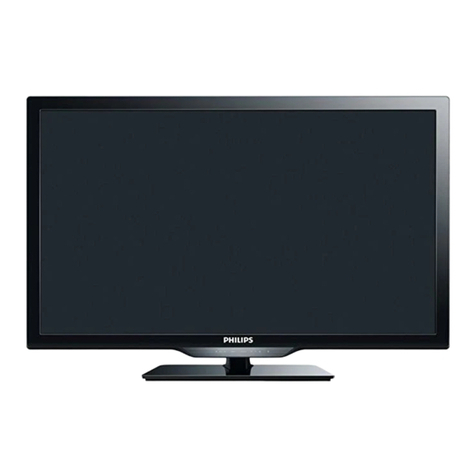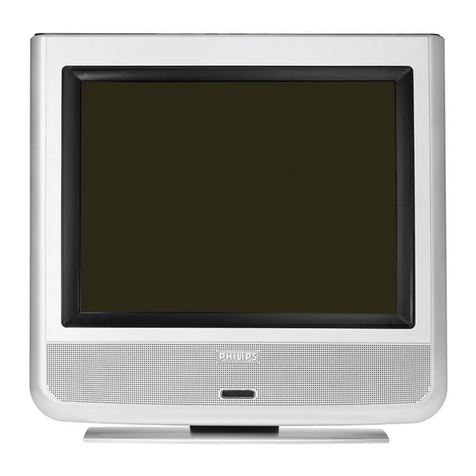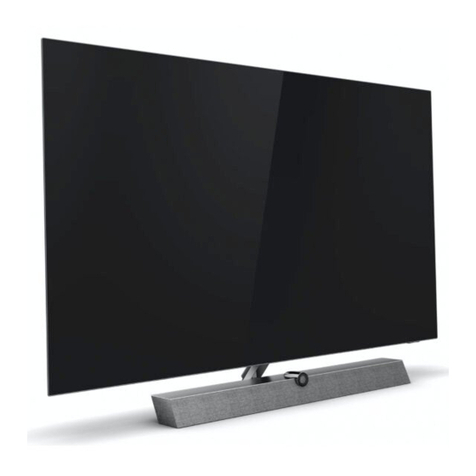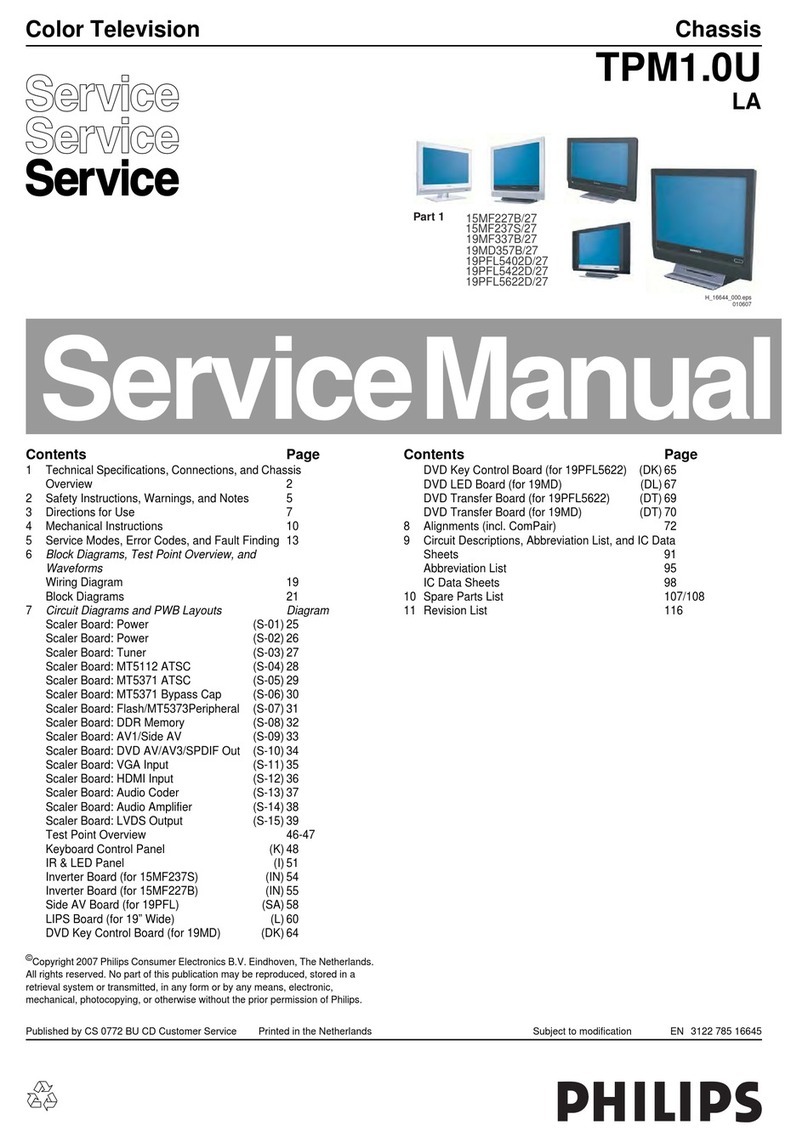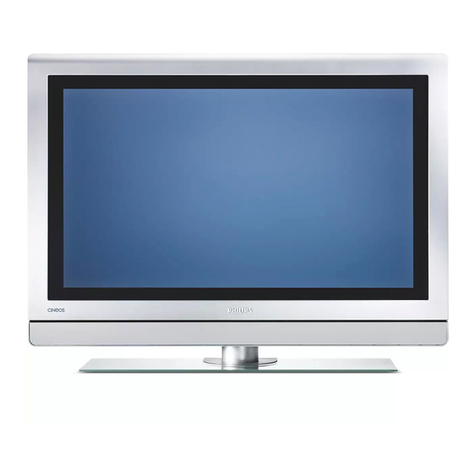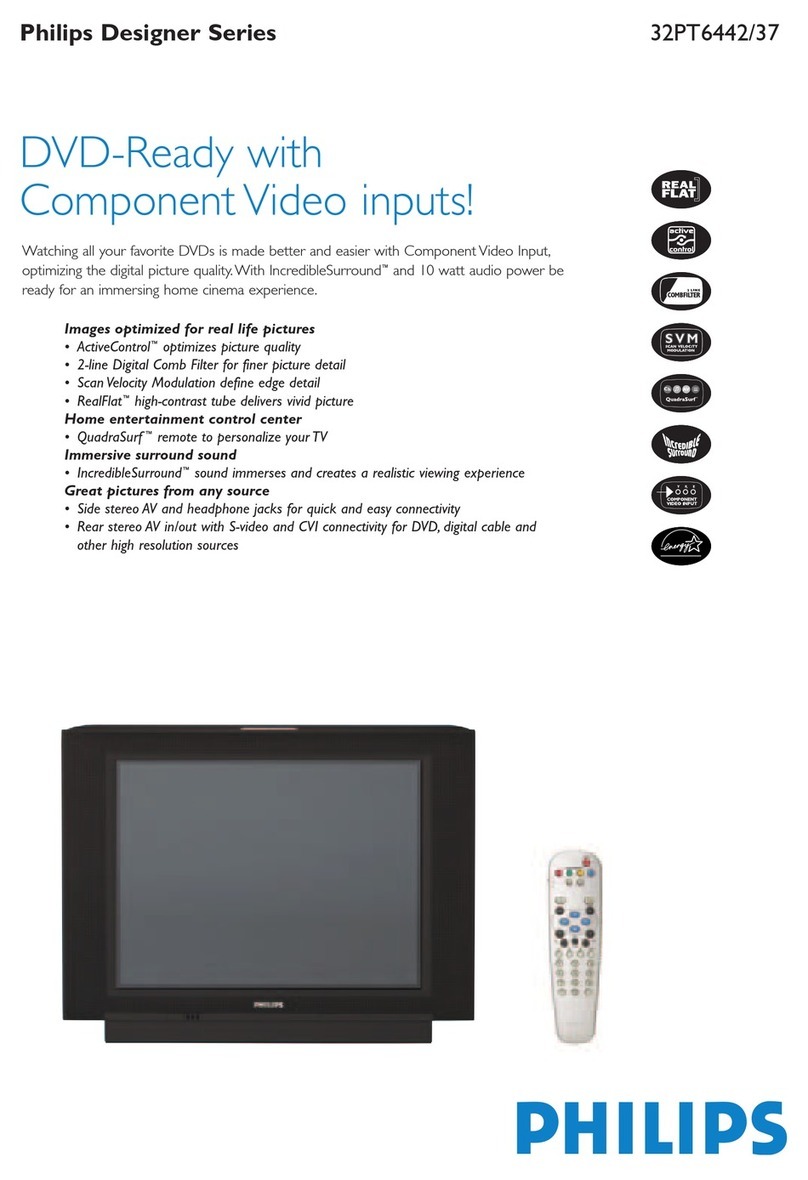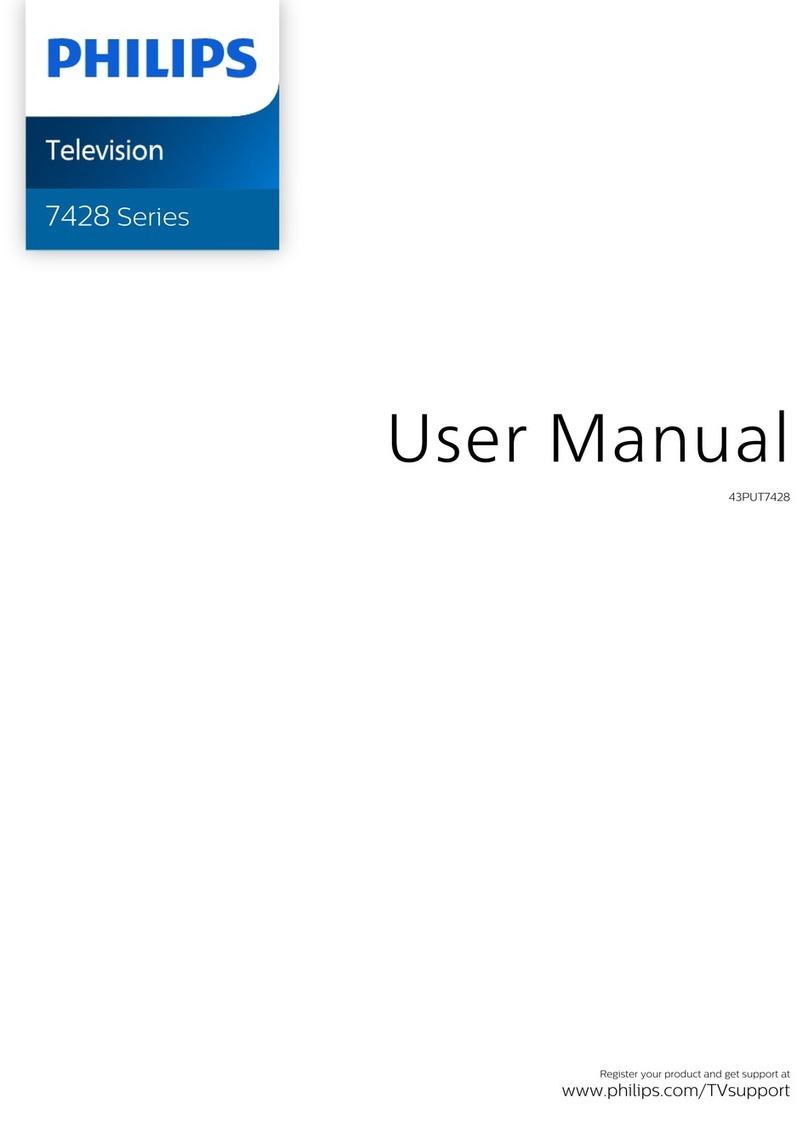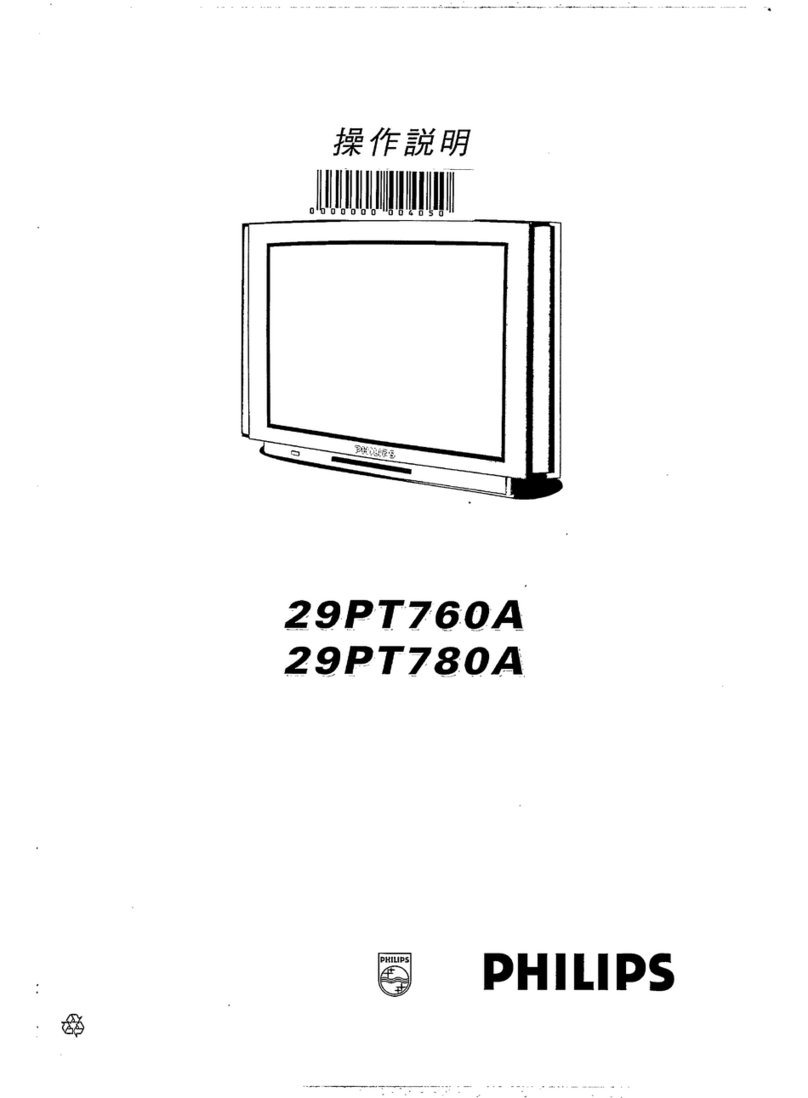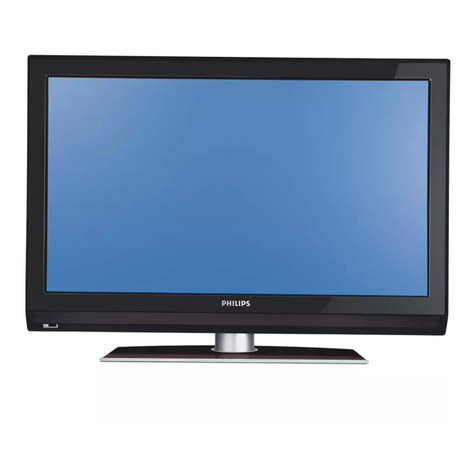Safety Instructions, Warnings, and Notes EN 3LCD AUO 2K7 2.
2. Safety Instructions, Warnings, and Notes
Index of this chapter:
2.1 General
2.2 Safety Precautions
2.3 Servicing Precautions
2.1 General
Notes:
• Only authorised persons should perform servicing of this
module.
• When using/handling this unit, pay special attention to the
LCD Module: it should not be enforced into any other way
then next rules, warnings, and/or cautions.
•"Warning" indicates a hazard that may lead to death or
injury if the warning is ignored and the product is handled
incorrectly.
•"Caution" indicates a hazard that can lead to injury or
damage to property if the caution is ignored and the
product is handled incorrectly.
2.2 Safety Precautions
2.2.1 Warning
• Do not supply a voltage higher than specified to this
product. This may damage the product or can create
hazardous situations.
• Do not use this product in locations where the humidity is
extremely high, where it may be splashed with water, or
where flammable materials surround it.
• Do not install or use the product in a location that does no
satisfy specified environmental conditions. This may
damage the product or can create hazardous situations.
• If a foreign substance (such as water, metal, or liquid) gets
inside the product, immediately turn “OFF” the power.
Continuing to use the product may cause electric shock or
can create hazardous situations.
• If the product emits smoke and abnormal smell, or makes
an abnormal sound, immediately turn “OFF” the power.
Continuing to use the product may cause electric shock or
can create hazardous situations.
• Do not (dis)connect the connector while power to the
product is “ON”. It takes some time for the voltage to drop
to a sufficiently low level after the power has been turned
“OFF”. Confirm that the voltage has dropped to a safe level
before (dis)connecting the connector.
• Do not pull out or insert the power cable from/to an outlet
with wet hands. It may cause electric shock.
• If the power cable is damaged, or if the connector is loose,
do not use the product, otherwise, this can lead to
hazardous situations or may cause electric shock.
• The LCD Backlight Inverter unit uses a high voltage for the
lamps. Keep the cautions concerning electric shock and do
not touch the device circuitry handling the inverter unit. And
because the capacitors of the device circuitry may remain
charged at the moment of Power “OFF”, standing for 1
minute is required in order to discharge the device circuitry.
2.2.2 Caution
• Do not place this product in a location that is subject to
heavy vibration, or an unstable surface such as an inclined
surface. The product may fall off or fall over, causing
injuries.
• Before disconnecting cable from the product, be sure to
turn off the power. Be sure to hold the connector when
disconnecting cables. Pulling a cable with excessive force
may cause the core of the cable to be exposed or break the
cable, and this can lead to fire or electric shock.
• This product contains glass. If shock, vibration, heat or
distortion is applied to the product, the glass may be
broken.
• If glass surface of the display breaks or is scratched, do not
touched the broken pieces or the scratched with bare
hands. You may be injured.
• LCD Module requires to be handled with special care. LCD
Module is not to be touched with metal or hard materials.
Must not be stressed by heat or mechanical impact.
• There are some particular components on the rear panel of
this product. Skin contact with these components may
cause an electric shock. So, handle with care.
• While moving the product, be sure to turn off the power,
disconnect all cables and watch your step. Dropping the
product may cause injuries from electric shock. So, while
moving the product handle with care.
• When cleaning the panel is necessary, wipe it with a soft
and moistened cloth a neural detergent. Caution on
connector area. Do not use chemicals such as thinner or
benzene.
• LCD Module emits heat from the Lamp, Backlight lamp,
and component parts. Therefore, the environmental
temperature must not exceed 50 deg. C. LCD Module
Backlight Inverter system is driven by high voltage, so it
must avoid conductive materials.
• If repairing components with a lead line, high voltage or
high temperature components must be put out from a lead
line and fix.
• Do not place an object on the surface of the display. The
glass may break or be scratched.
• This product may be damaged if it is subject to excessive
stresses (such as excessive voltage, current, or
temperature). The absolute maximum ratings specify the
limits of these stresses.
• Do not cover or wrap with any covering materials while
power is applied to the product.
• This product is made from various materials such as glass,
metal, and plastic. When discarding it, be sure to contact a
purchase place.
• If a discrepancy occurs due to any arbitrary modification or
disassembly, supplier is not responsible for function,
quality or other items.
• Within the warranty period, general faults may be charged
for depending on responsibility for the faults. You handle
with care
2.3 Servicing Precautions
A colour TFT LCD Module can easily be damaged by both
electrical and mechanical stresses. Users therefore, are
requested to follow the “Servicing precautions of colour TFT
LCD Module” on the following.
2.3.1 System Assembler
•Follow the power sequence: An abnormal power
sequence may cause critical malfunction or electrical
damage.
•Prevent physical stress.
•Prevent overheat:
– High temperatures on the surface of the screen may
cause poor quality. Please use the LCD Module on the
specified temperatures.
– Low temperatures (under 10 deg. C) makes the LCD
Module respond slowly, make the Backlight worse
operated, and will shorten very much the lifetime
accordingly.
•Keep LCD Module dust-free: The LCD Module is
sensitive against dust; it can cause visual or functional
problems.
